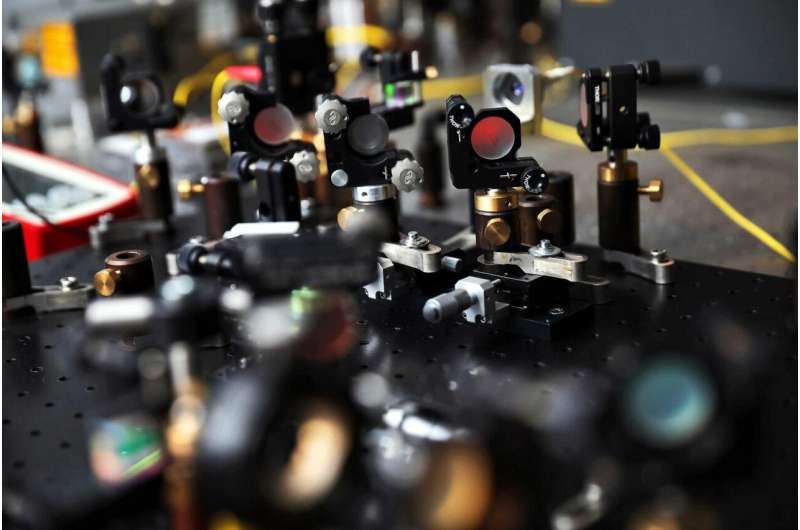Quantum-inspired approach dramatically lowers light power needed for optical coherence tomography

Researchers have shown that a detection technology borrowed from quantum optics can be used to perform optical coherence tomography (OCT) with much lower light power than previously possible. This could greatly improve the imaging quality available from OCT used for medical imaging applications.
OCT uses light to provide high-resolution 3-D images in a non-invasive manner. Although it is commonly used for ophthalmology applications, OCT can also be used to image many other parts of the body such as the skin and inside the ears, mouth, arteries and gastrointestinal tract.
"For clinical applications, being able to perform OCT with low light power is crucial because safety standards limit the light intensity levels that can be used," said research team leader Sylwia Kolenderska from The University of Auckland in New Zealand. "In some cases, these power levels are not high enough to achieve good image quality."
In The Optical Society (OSA) journal Optics Letters, the researchers describe how they replaced standard OCT detectors with superconducting single-photon detectors (SSPDs), a technology used in quantum optics to distinguish individual photons. This setup allowed them to achieve good image quality with power levels up to 1 million times lower than those currently used in OCT instruments.
"In the future, if single-photon detection technology could be made much smaller and less expensive, a line of portable diagnostic machines based on light-based imaging might be created for safe self-diagnosis purposes in the comfort of one's home," said Kolenderska.
Capturing single photons
The researchers came up with the new detection scheme while developing an OCT method based on quantum light for which SSPDs were central. They soon realized that SSPDs could also be used in a standard OCT arrangement to enhance sensitivity.
"Because SSPDs can detect single photons, an OCT instrument using them requires only a tiny amount of light compared to what is currently used in modern OCT machines," said Kolenderska. "Yet, it still produces high-detail images that are comparable with existing OCT systems."
Incorporating SSPDs into a standard OCT system required some changes to the typical optical setup. Modern OCT instruments work by discerning the colors, or wavelengths, of light reflected from an object. This wavelength discrimination can be performed by using a single pixel detector while the light source produces one wavelength at a time or it can be done with a diffraction grating that splits the light into different wavelengths like a prism and a camera that detects these wavelengths.
The researchers used a fiber instead of a grating to separate different colors, which each travel at different speeds down the fiber. At the fiber's output end, they used the SSPD to capture the different colors as they arrive at different times. This allowed the light spectrum to be acquired for reconstructing OCT images.
Low-power light yields high-quality images
To demonstrate the new detection scheme, the researchers acquired OCT images of a stack of three types of glass and a piece of onion, which represented a biological sample. They obtained good-quality images of both samples at light intensity levels at least five orders of magnitude lower than those set by safety standards.
"Our results show that the new detection approach could allow quality OCT imaging of different parts of the body, especially sensitive organs such as the eyes, without worrying about going above the safety levels in terms of light power," said Kolenderska. "In fact, the SSPD would be damaged beyond repair long before even 1% of the safety level is reached."
The researchers did, however, observe artifacts—elements that do not correspond to the structure of the sample—in the OCT images they acquired. These appear because the detection system detects all kinds of interactions between photons, not just the ones needed to reconstruct an actual image. They are experimenting to find the best way to prevent these artifacts without compromising imaging speed, which would be important to maintain for clinical applications.
More information: Sylwia M. Kolenderska et al, Quantum-inspired detection for spectral domain optical coherence tomography, Optics Letters (2020). DOI: 10.1364/OL.393162
Journal information: Optics Letters
Provided by The Optical Society



















